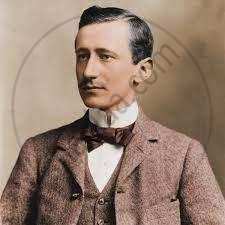Topics
Historiography : Development in the West
History : Applied History
Working of the Constitution
Historiography : Indian Tradition
The Electoral Process
Political Science : Working of the Indian Constitution
Applied History
Political Parties
History of Indian Arts
- What is ‘Art’?
- Indian Traditions of Visual Arts (Drik Kala): Painting
- Prehistoric Paintings
- Mural Paintings and Cave Painting
- Folk Styles of Paintings
- Classical Styles of Painting
- Miniature Paintings in Manuscripts
- Modern Indian Paintings
- Indian Traditions of Visual Arts (Drik Kala): Sculpture Art
- Indus Civilization Sculpture
- Folk Styles of Sculptural Art
- Classical Styles of Sculptural Art
- Indian Iconography
- Indian Traditions of Visual Arts (Drik Kala): Architecture and Sculpture
- Rock-cut Architecture
- Temple Architecture
- Indo-Islamic Architecture
- Indo-Gothic architecture
- Indian Traditions of Performing Arts
- Indian Theatre
- Indian Music
- Indian Dance
- Present Scenario of the Performing Arts
- Art, Applied Art, and Professional Opportunities
Social and Political Movements
- Movement
- Important Movements in India
- Tribal Movement
- Farmers Movement
- Worker's Movements
- Women’s Movement
- Environment Movements
- Consumer Movement
Mass Media and History
Challenges Faced by Indian Democracy
Entertainment and History
Sports and History
Tourism and History
Heritage Management
History - Imperialism
History - 20th Century Age of conflict
History - Emancipation of Asia and Africa
History - World after World War 2
Political Science
Geographical discoveries and colonization
- Concept for Geographical Discoveries and Colonization
Africa
- Imperialism - Africa
Asia: India, China, Japan
- Concept for Asia: India, China, Japan
Dictatorships in Europe, Second World War and world
- Concept on Dictatorships in Europe
- Concept for Second World War and World
First world war
- Concept on First World War
The League of Nations
- Concept for the League of Nations
Russian Revolution
- Concept for Russian Revolution
United Nations Organization
- Concept for United Nations Organization
Africa
- Emancipation of Africa
Asia
- Emancipation of Asia
Globalization
- Globalization After World War II
Scientific and Technological Progress
- Scientific and Technological Progress After World War II
Cold war
- Formation of the Cold War
Social Diversity and Democracy
- Social Diversity
- Coccept for Caste/Race and Democracy
- Concept for Language and Democracy
- Cocnept for Religion and Democracy
- Concept for Gender and Democracy
- Concept for Democracy and Diversity
Challenges to Democracy Remedial Measures to the Challenges
- Concept for Challenges to Democracy Remedial Measures to the Challenges
Internal work
Democracy
- Democracy - Meaning, Types and Characteristics
Political Parties and Types
- Political Parties
- Importance of Political Parties
- Major National and Regional Parties in India/ Types of Political Parties
Notes
Radio:
- Radio is a form of sound transmission over radio waves that often involves the distribution of music, news, and other programming from a single broadcast station to a large audience of listeners with radio receivers. The use of radio waves for signalling and communication is known as radio technology.
- Electromagnetic waves with a frequency between 30 hertz (Hz) and 300 gigahertz are known as radio waves (GHz). They are produced by a radio transmitter, an electrical device that emits waves when attached to an antenna, and are picked up by a radio receiver, which is connected to a different antenna.
In the 1890s, Italian inventor Guglielmo Marconi created the first radio or wireless telegraph. When he sent a wireless Morse Code message to a source more than a kilometre away in 1895, his concepts began to take shape.
Guglielmo Marconi
All India Radio (Akashvani):
|
Akashvani |
- The first private radio station to air daily programming was "Indian Broadcasting Company" (IBC).
- The Indian Broadcasting Company's Mumbai radio station delivered the first English newscast in British India on July 23, 1927 (IBC).
- Later, a Bengali news bulletin was introduced on the IBC radio station in Kolkata.
- Later, the British government took control of the same business and changed its name to 'Indian State Broadcasting Service' (ISBS). It changed its name to 'All India Radio (AIR)' on June 8th, 1936.
- AIR was a crucial component of the Ministry of Information and Broadcasting after independence (India). It initially broadcast government initiatives and programmes.
- According to the famous poet Pandit Narendra Sharma's recommendation, it was given the name 'Akashvani.' Akashvani airs a variety of literary, educational, and entertaining programmes. Additionally, it premieres specific programmes for women, youth, farmers, and labourers.
- The 'Vividh Bharati' programmes are broadcast in 146 Indian dialects in addition to 24 regional languages. Radio services are now being offered by numerous new stations, including ' Radio Mirchi.'
If you would like to contribute notes or other learning material, please submit them using the button below.

